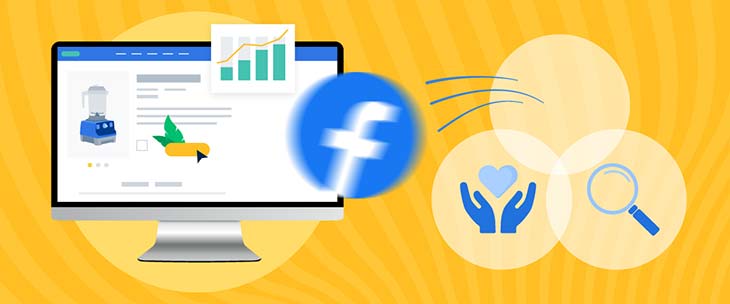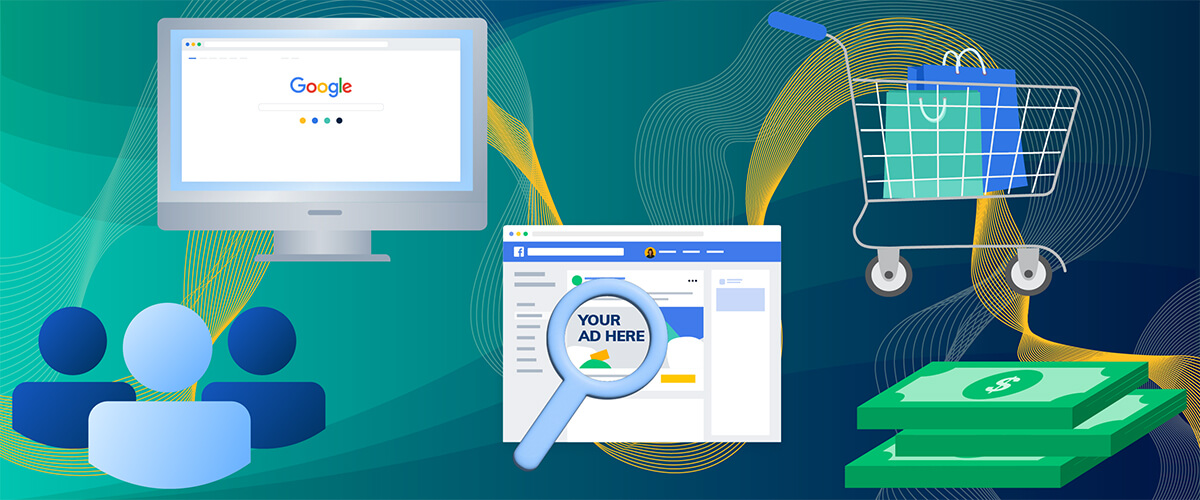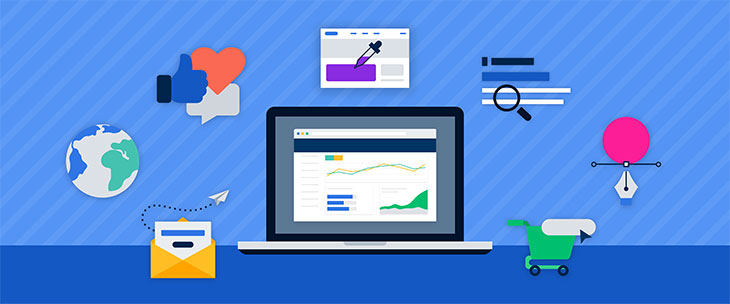So you’re new to omni-channel marketing and wondering where to begin. Don’t worry! We’ve all been there. With so many different strategies, platforms and tools available, it’s easy to become overwhelmed. However, if you stay focused on your goals, omni-channel marketing is a fantastic way to drive customers to your business again and again. Like with anything new, you might overlook potentially valuable opportunities and make a few mistakes along the way. Fortunately, Logical Position is here to help set you up for success!
Three Common Marketing Mistakes
When I talk with small businesses owners and marketing newbies, I typically see them make three common mistakes when setting up an omni-channel marketing strategy.
1. They Don’t Diversify Their Traffic Sources
I view traffic like an investment portfolio: It should be diversified so that all your eggs aren’t in one traffic basket. However, many new marketers rely on Google Ads for 80-90% of their site traffic — setting the stage for potential trouble. For starters, Google only reaches people actively searching for specific products or services, representing a very narrow part of the sales funnel. Additionally, relying on a single source for website traffic is risky. If there’s ever a payment issue or your ads get shut off, new traffic suddenly dries up.
Including other traffic sources like paid social advertising, email, or organic traffic driven by your search engine optimization (SEO) efforts enables you to reach different customer groups, while at the same time diversifying your traffic efforts.
2. They Don’t Address Website Conversion Issues
The goal of driving new website traffic is to ultimately have those visitors make purchases. However, many small business owners don’t take the time to examine their visitors’ purchase or website experiences. As a result, they don’t know critical metrics such as where traffic drops off during the customer purchase journey or how to make changes that could improve website conversions. It is unfortunate when data isn’t examined, because even minor improvements in a site’s conversion rate could equal significant revenue gains.
3. They Focus All Their Attention on Advertising While Ignoring Retention
Driving new traffic is the most expensive phase in omni-channel marketing because it means spending money for ads, even though outcomes can be hit or miss. Still, many new marketers spend most of their efforts chasing expensive new traffic while ignoring their valuable existing customers. Retention efforts are much more profitable, however, because you’ve already spent the money to acquire these new customers — making them more likely to buy again.
Strategies For Fixing These Common Errors
The good news is, you can fix these mistakes with the right strategies and a little hard work. Here’s how to get started:
1. Diversifying New Traffic
Facebook is a great place to start diversifying your new traffic acquisition efforts. By installing a Facebook pixel on your website, you can advertise to potential customers who have already visited your site. You can also use existing customer information like email lists, purchase lists and quote forms to create lookalike audiences that target Facebook users who resemble your current customers. Using Facebook as a prospecting method is relatively low-risk and can drive large amounts of traffic and even revenue.
In addition to Facebook, you can also begin diving into SEO to help boost your organic traffic. The most crucial factor here is to ensure that all your website H1 headings contain as many relevant keywords as possible. Once you’ve audited your headings, move on to your product descriptions and meta tags. Before long, you’ll have expanded your traffic efforts well beyond Google.
2. Improving Website Conversions
Judging how well your site converts new traffic into buyers involves a lot of gradual testing to find out where people are falling off during the purchase process. Do they only visit the home page? Do they leave the site after adding to the cart? Once you’ve identified where traffic lags, make strategic changes to see what sticks.
You can start this process in Google Analytics by navigating to behavior -> site content -> exit page. Then create segments for home page visitors, product page visitors, cart page visitors, cart abandoners and purchasers. As you examine this information, a story will begin to emerge that should tell you where to start making improvements. However, here are a couple of notes to keep in mind: Make sure you have enough data to make informed decisions. A good rule of thumb for time frames should be 30 days, but you may need more depending on your site traffic. Also, make one change at a time and don’t make any additional judgments until you’ve had at least a thousand visitors experience the change.
3. Fostering Customer Retention
The first step in improving retention is investing in an email infrastructure that can automate emails to your customers. You can begin talking with your most qualified customers at strategic moments in their purchasing journey by setting up a welcome series, win-back emails and abandoned cart notifications. You can also set up more targeted email automations that send messages on purchase anniversaries or to customers who’ve bought using a coupon code. The best part is that once you’ve put the work into creating these automations, they’ll continue working for you 24/7.
After you’ve squared away your email program, consider implementing a loyalty program on your website. These days, consumers expect the same experience they get at big box stores, no matter what site they’re on, and many big box stores use loyalty programs to reward returning customers. Not only will these programs allow you to foster better relationships with your customers, but you can also use the data you collect to enhance other parts of your sales funnel, like your Facebook lookalike audiences.
Fortunately, there are lots of vendors who can create low-cost loyalty programs for your site. For small businesses looking for a free option, LP partners with Smile.io. For mid-market or enterprise businesses, Loyalty Lion might be a better fit.
You Can Market More Effectively
It’s challenging to effectively market your small business, especially when you’re busy running it. That’s why many owners who are new to marketing overlook potentially valuable opportunities. But by focusing your marketing efforts on improving traffic, conversions and retention, you’ll be targeting your entire customer base simultaneously. With these efforts working together, you’ll increase new traffic, convert more of those visitors into buyers and then inspire them to buy again and again. That’s where the power of omni-channel marketing really shines through.




